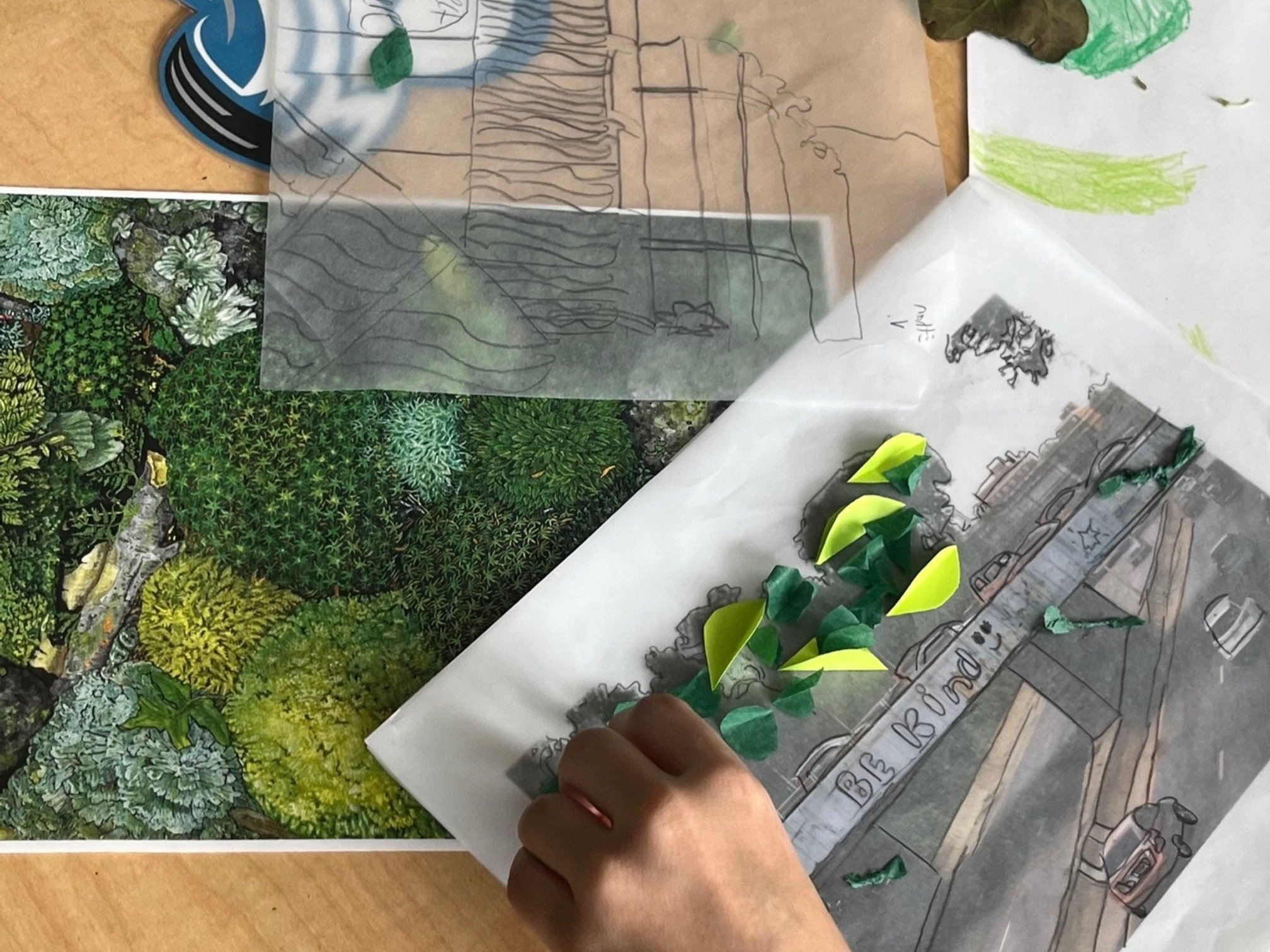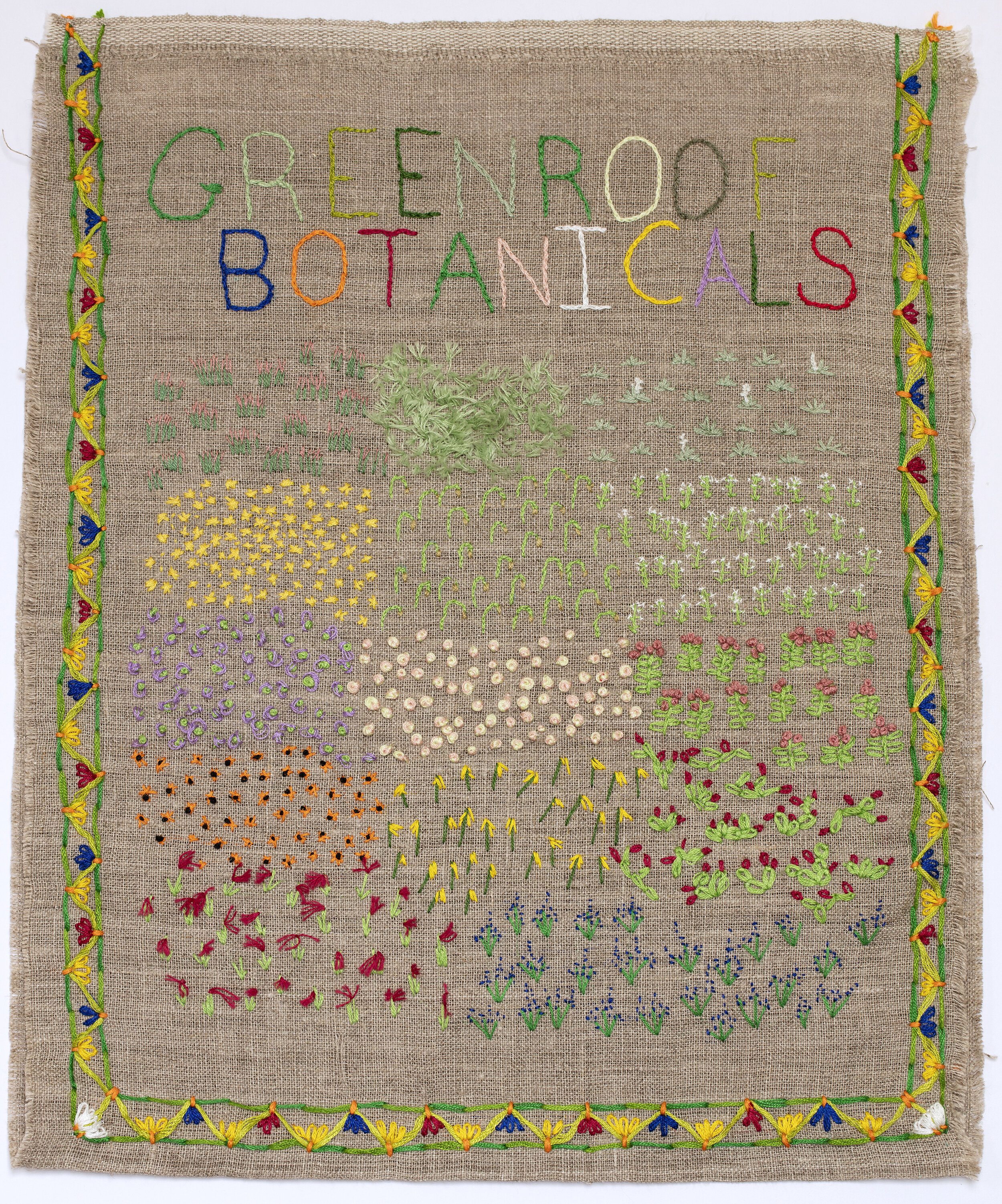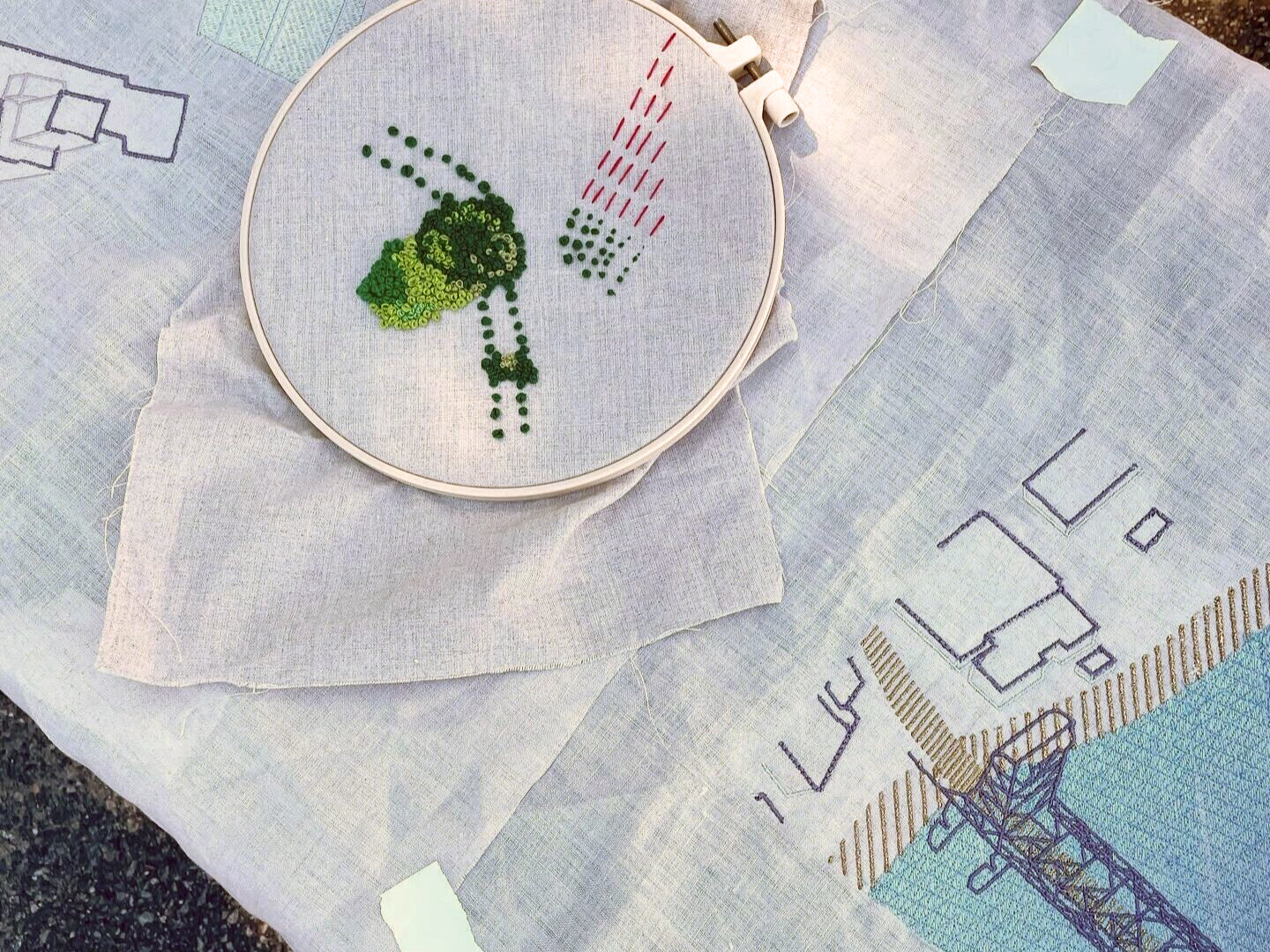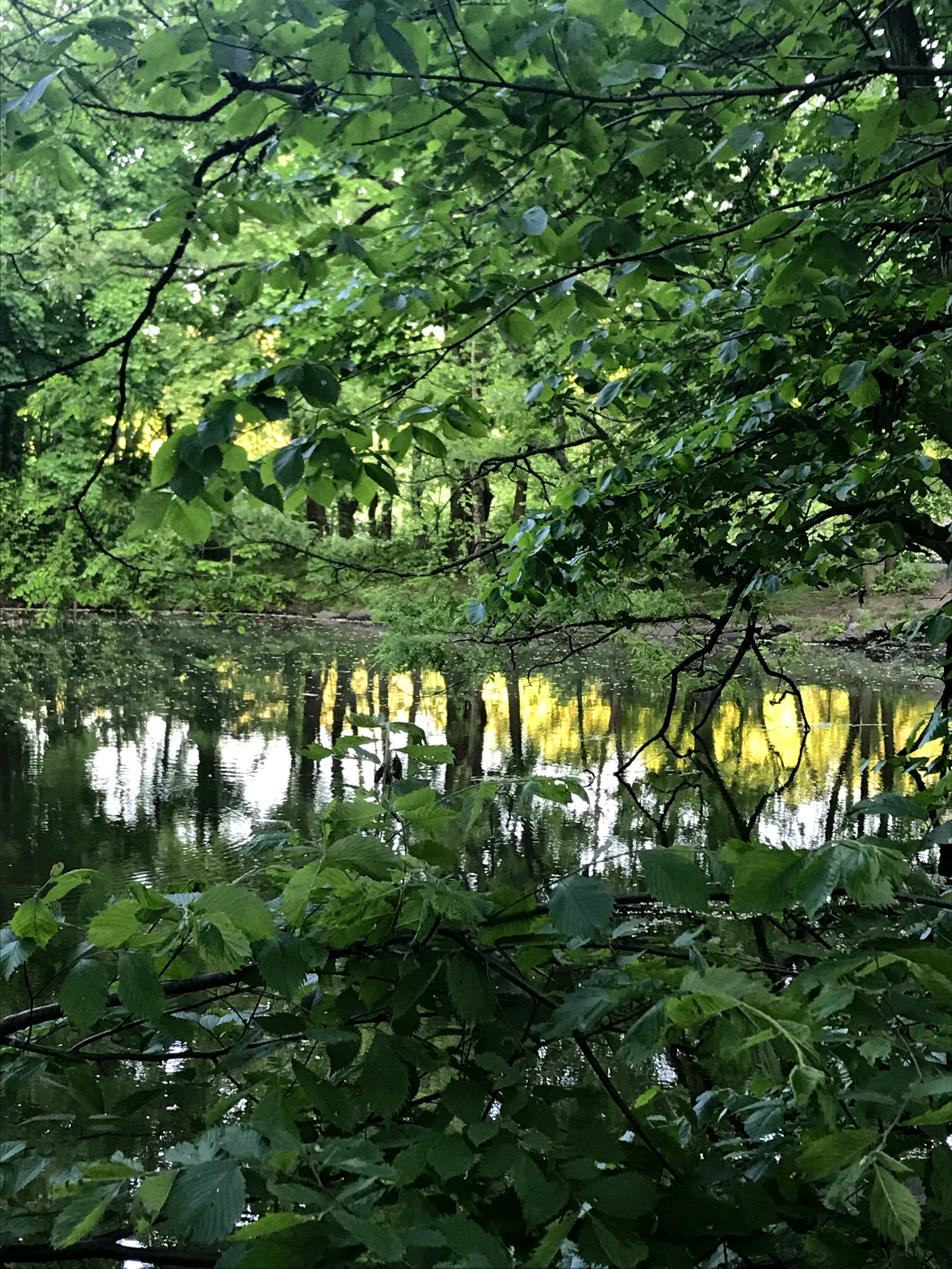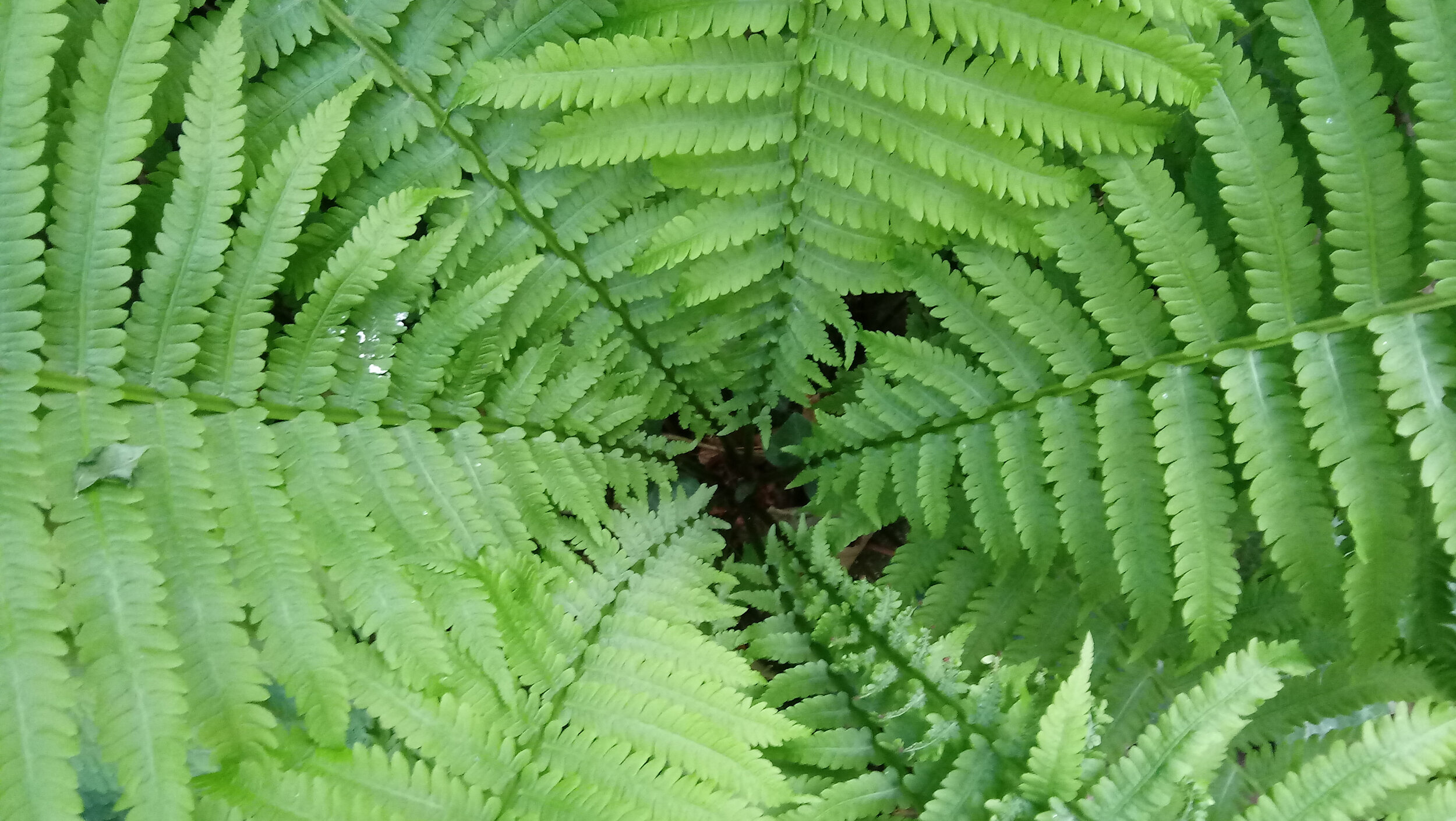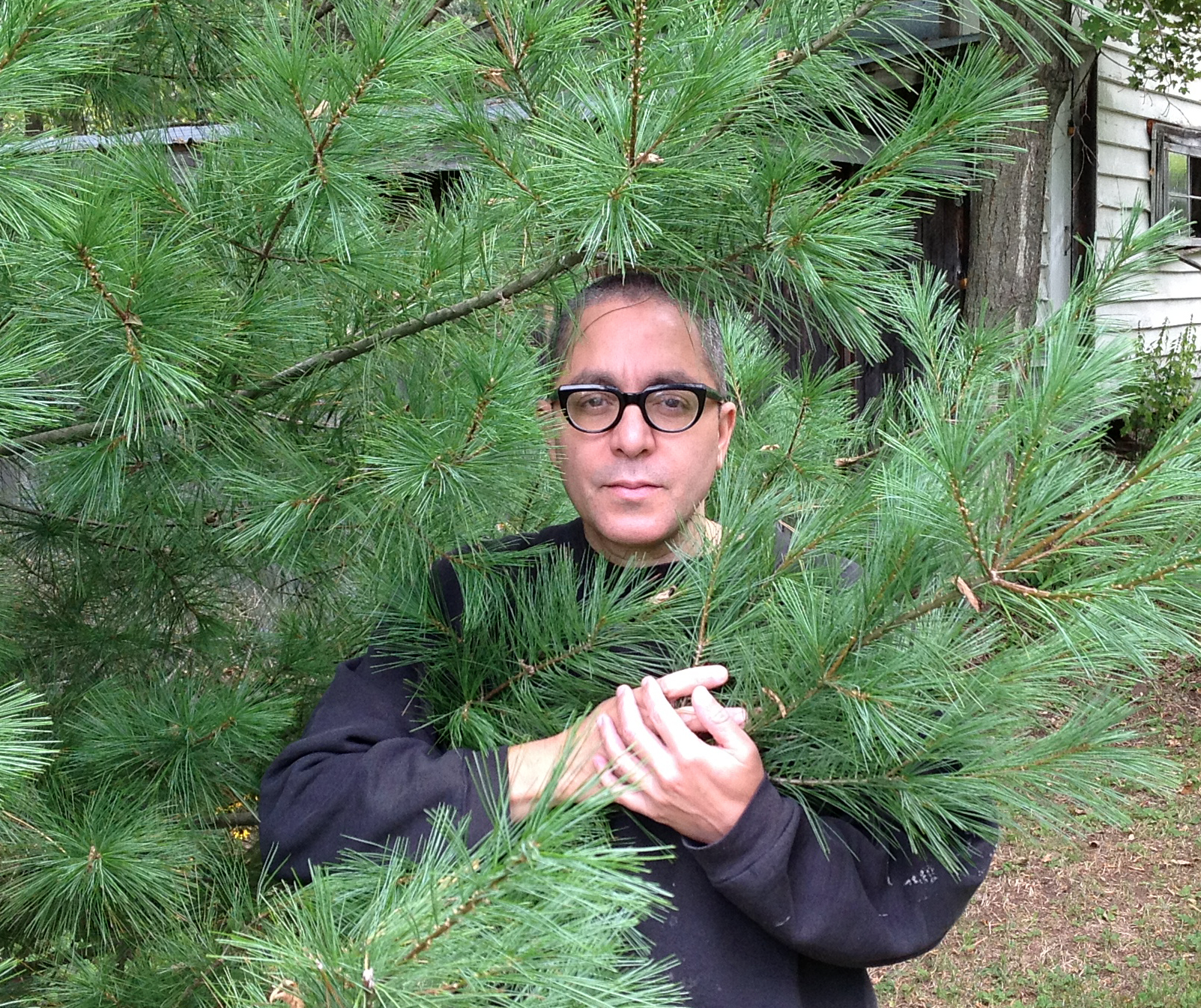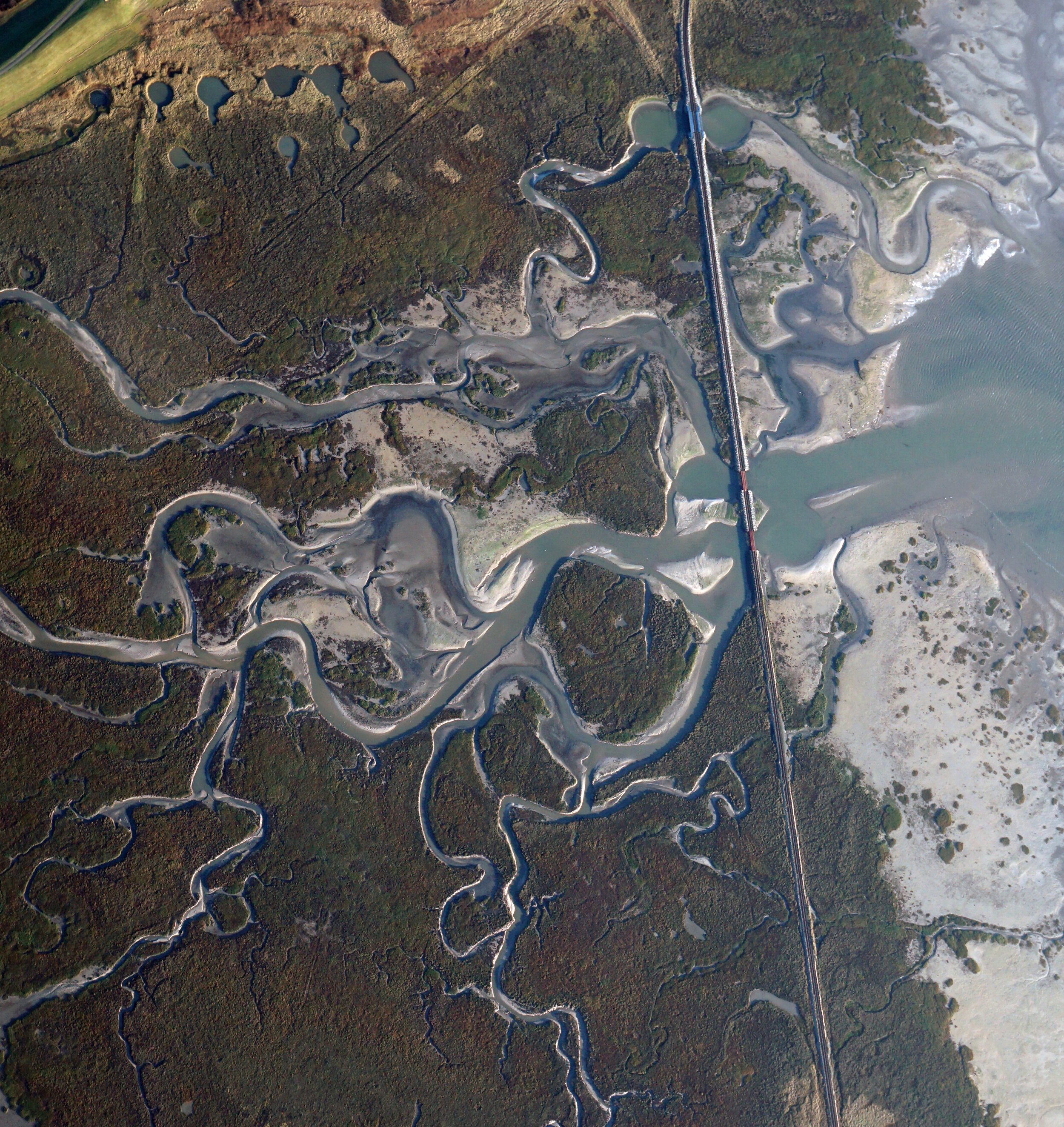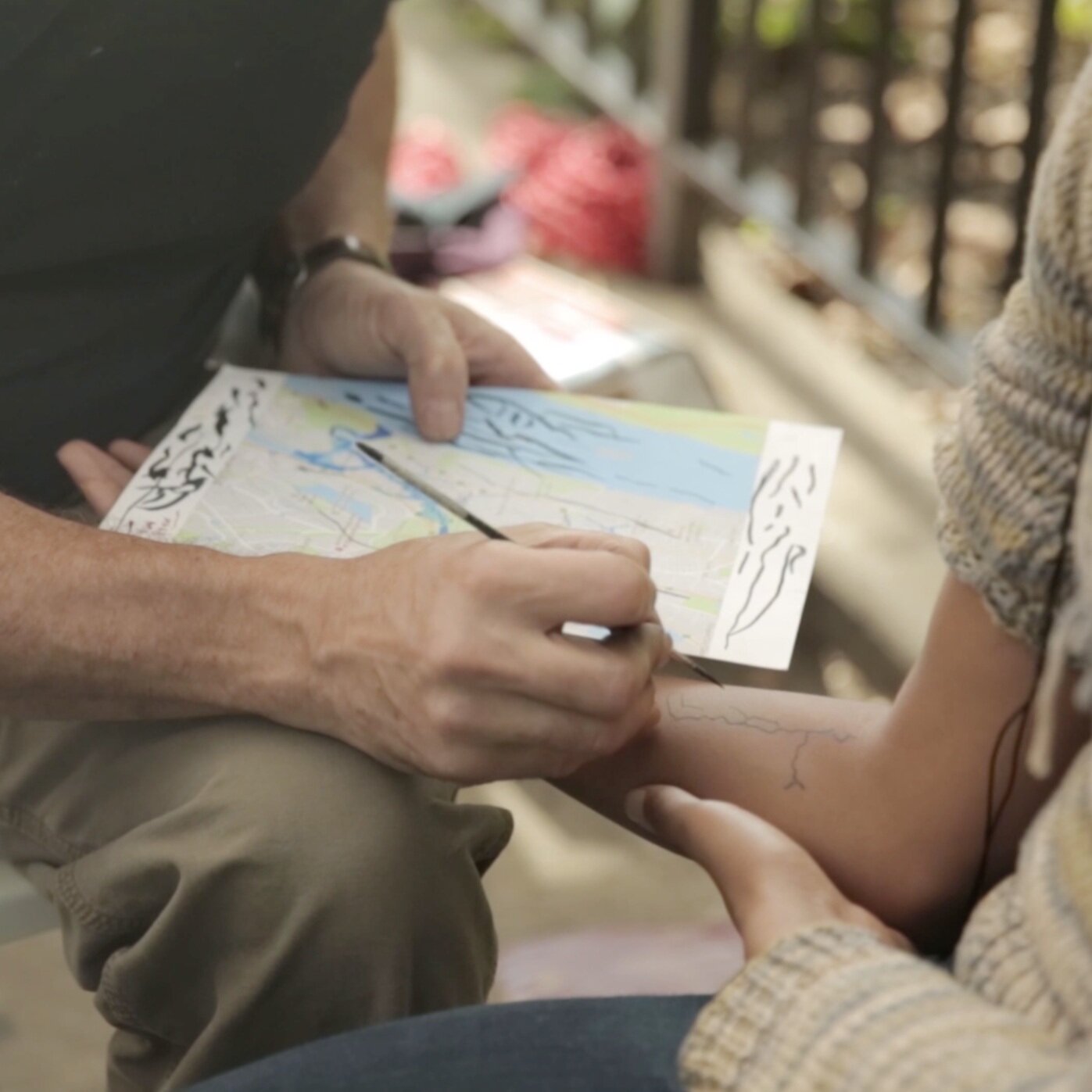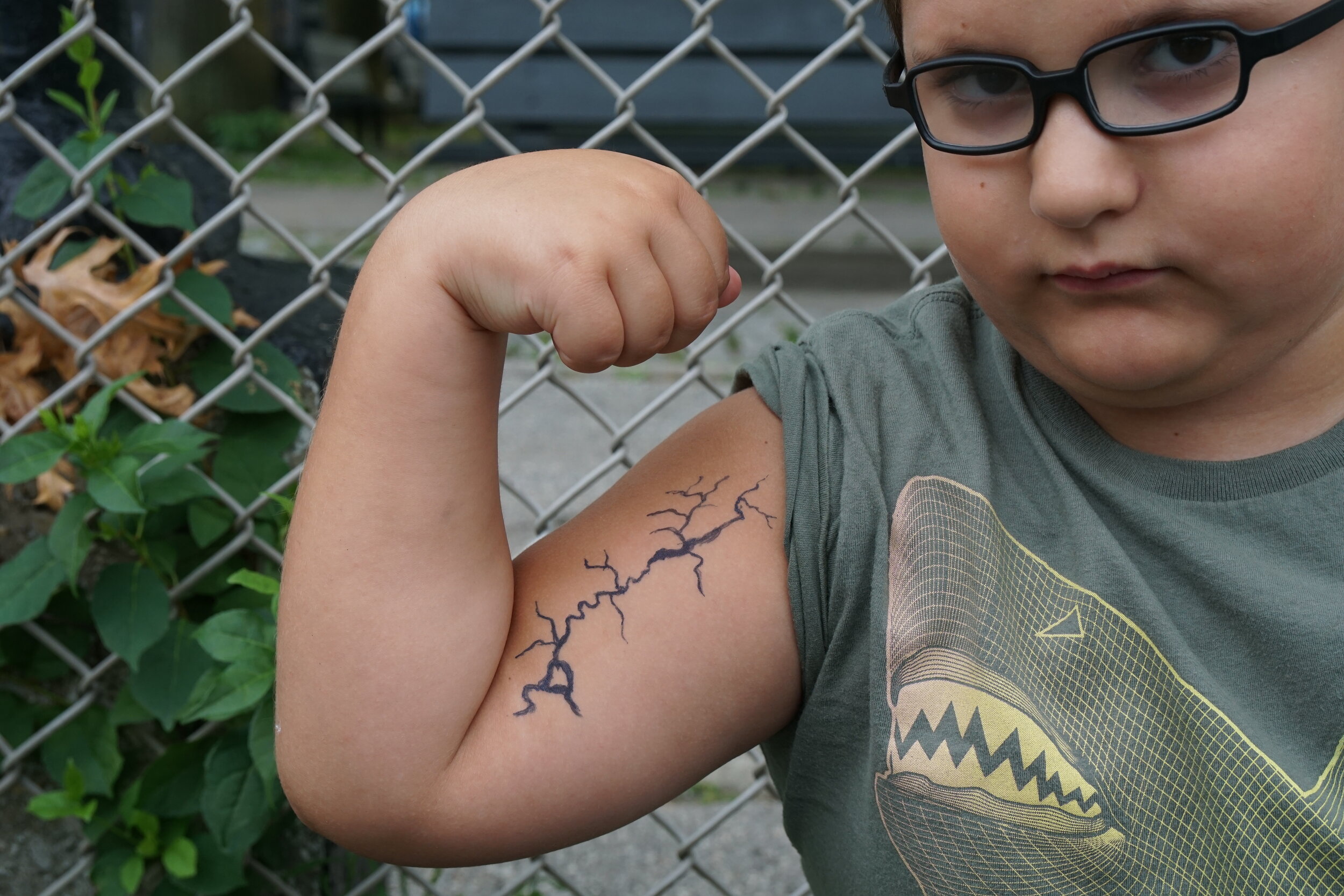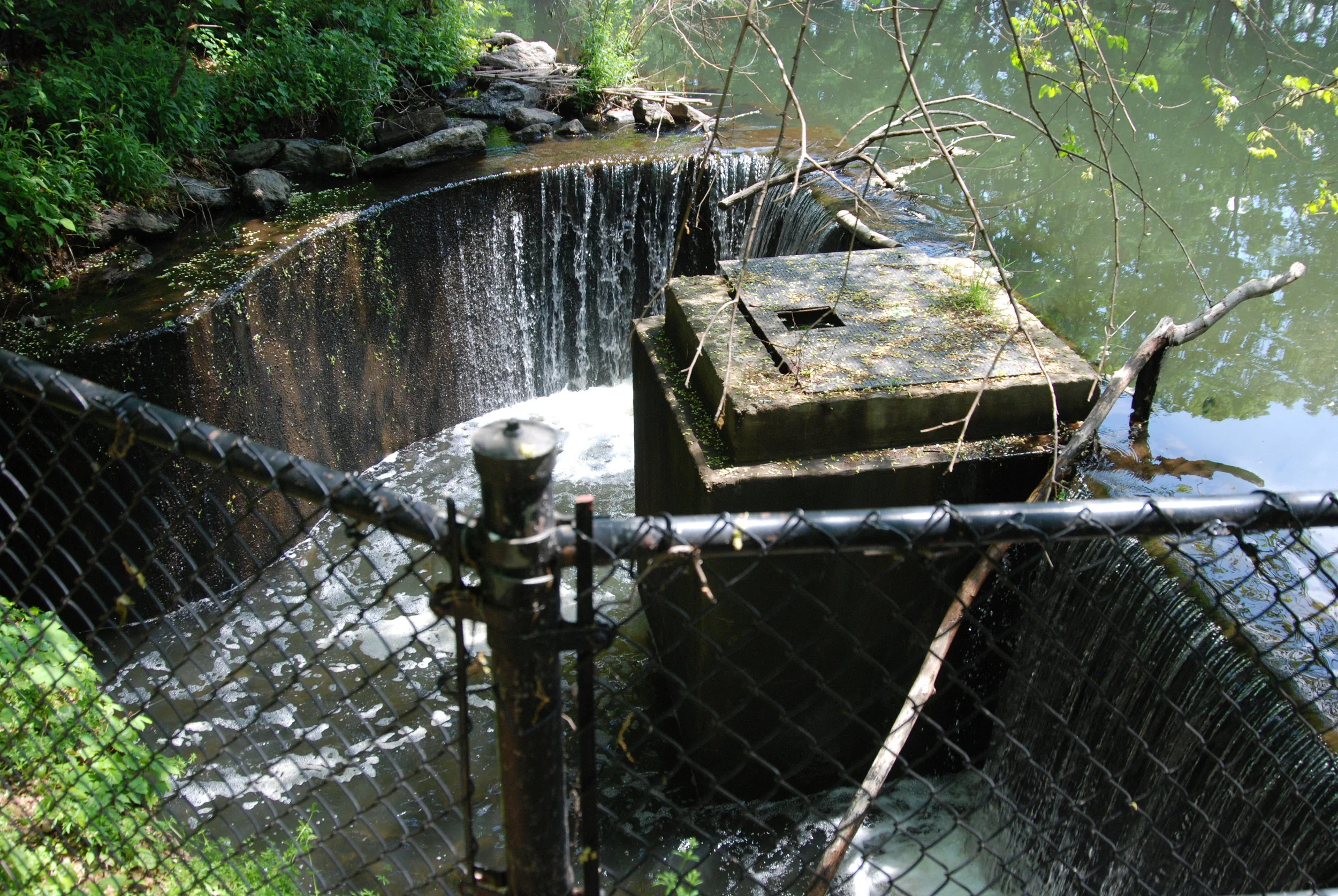
The original course of Tibbetts Brook, before it was channeled into the Broadway Combined Sewer.
100 years ago, Tibbetts Brook meandered its way through the Bronx wetlands, sustaining an enormous ecosystem on the edge of the booming industry of Manhattan.
As the city began to stretch and grow, development to the north of the city was needed, and the wetlands were paved over. Water flowing into the estuary was dammed in Van Cortlandt Lake, and Tibbetts Brook was buried into the Broadway sewer. Today, this "simple solution" has become the leading cause of pollution in the Harlem River due to sewer overflow. In addition to water pollution, flooding plagues Marble Hill and the neighborhoods surrounding Van Cortlandt Park, further splintered by a century of poor urban planning which has fractured and isolated this area of the Bronx.
Through Rescuing Tibbetts Brook, a constellation of artist and designer- led initiatives in the Bronx, City as Living Laboratory is calling attention to the solution: unearthing this buried stream and channeling it along an abandoned railroad line directly into the Harlem River through a process called daylighting. This will allow the clean, fresh water of Tibbetts Brook to bypass the sewer system, collect excess rainwater, and create a beautiful new linear park with walking trails and bike paths that will join the new greenway planned to connect Van Cortlandt Park to the High Bridge.
CURRENT ARTIST PROJECTS
THE BURIED BROOK
In the Spring of 2022, CALL commissioned composer and sound artist Kamala Sankaram to develop The Buried Brook, a free, interactive augmented reality sound walk. It traces the sonic geography of the buried Tibbetts Brook, which once flowed from Yonkers through the Bronx to the Harlem River. While walking along the former route of the buried brook, the app invites users to turn a sensitive ear toward the past, present, and future of Tibbetts.
The Buried Brook app was created from community-sourced audio recordings, made both in public workshops organized by CALL and also on the mobile devices of participants on their own time. The Buried Brook will be launched in October 2023,
Visions of Tibbetts brook
Visions of Tibbetts Brook was conceived by Bronx-based photographer and conceptual artist Manuel Acevedo. The project started at the Kingsbridge Heights Community Center (KHCC) in the summer of 2022 and moved to AmPark Neighborhood School in early 2023. At AmPark, Acevedo conducted 9 classroom art-making sessions and two site visits with the Van Cortlandt Park Director of Environmental & Garden Education followed by an in-school session with Jessica Wilson, Associate Professor of Civil and Environmental Engineering at Manhattan College.
Tibbetts Estuary Tapestry
The Tibbetts Estuary Tapestry, by Ana De La Cueva and Matthew López-Jensen, will invite the public to reimagine how the tangle of poorly planned and congested streets, ringed with big box stores and highways along the Broadway corridor of the Northwest Bronx, could be turned into green roofs, bioswales (rain gardens), vertical gardens, and other green spaces to bring environmental, health, and habitat benefits to humans, animals, insects, aquatic, and other life forms. To create the Tapestry, up to 100 volunteers embroidered their visions of green spaces throughout the Northwest Bronx. This communal process was intended to ignite peoples’ imaginations and point to real opportunities for modest interventions that collectively could change the urban landscape in significant ways and make it more sustainable through greening and storm-water capture. Tibbetts Estuary Tapestry is currently on view at the Van Cortlandt House Museum, in the Bronx. This project is being generously supported by the C.O.B.Y. Foundation.
Daylighting Waters | Grounding Voices
Miguel Braceli’s project will seek to approach the daylighting Tibbetts Brook master plan as a participatory experience, drawing viewers into a filmed performance where the rivers and people are braided within a collective event of learning and making. The project will evoke the interconnectedness of the entire Tibbetts watershed, which extends over 2500 acres from Yonkers and Westchester County into the hillsides of Riverdale, Fieldston, Marble Hill, through Van Cortlandt Park, Kingsbridge Heights, and down into the Harlem River. The first section of Braceli’s performance in Van Cortlandt Park will echo the collective braiding of streams flowing into the larger brook. This collaborative film project will be contextualized by the voices of participants along with perspectives on Tibbetts from experts on the daylighting initiative. The completed video will serve as a springboard for community dialogue around ideas for the greenway master plan to help ensure that it responds to the needs and visions of local residents.
With flowing textiles, diverse voices, and the supporting bodies of participants, the act of braiding becomes a learning exchange; connecting the layered ecosystems and peoples that are woven together in this complex and ever-evolving community. The braid begins as a metaphor and ends as a tool to measure the different sections of the corridor as well as a means to approach the challenges and opportunities of a linear urban park project. Braceli’s film will mirror the diverse ecosystems and peoples that are woven together in this complex and ever-evolving community.
After the video is completed, Braceli will conduct a walk in Spring 2023 along the corridor. This procession (part 2 of the project) will be designed so that participants can gain onsite knowledge and use it to propose ideas in a 1:1 scale collective drawing at the end of the performance. Similar to Braceli’s other communal projects, this work aims to use poetical gestures to address social, political, and ecological challenges face to face with the transformative possibilities of education.
Miguel Braceli, Living Boundaries (performance at Lake Roland, Baltimore. Maryland Institute College of Art & CALL/City as Living Laboratory
GROWING A GREEN HEART
Nicolás Dumit Estévez Raful Espejo’s ability to make art out of urban spaces, and to do so somewhat outside of the art world, is what led him to develop Growing a Green Heart. The workshop and curriculum consists of a one-day, highly experiential community gathering-walk-workshop at Van Cortlandt Park in the Bronx. During the walk, Estévez will invite participants to develop connections with the ecosystem that surrounds them. Built on the structure and concepts developed from his 2019 CALL/WALK The Tree and I, this performance is at the intersection of social involvement, empathetic activism, and compassion for Nature. CALL’s emphasis will be on bringing together a diverse and intergenerational group from teens to seniors and traditional and non-traditional families, so as to offer a platform for dissolving polarities. Growing a Green Heartencompasses walking in ways that develop awareness and focus and engages in performative exercises that will awaken a personal connection to Nature..
ESTUARY TATTOOS
With his Estuary Tattoos, artist Bob Braine mapped both the history and the future of Tibbetts Brook and its surrounding wetlands on the bodies of local NorthWest Bronx residents. A series of body-painting events took place throughout the summer and early fall of 2018. By making local residents into works of art, Braine helped them visualize and understand the estuary on a visceral level, the way it was before urbanization, the way it currently is with diagrams of the sewer systems, and the way it can be through the future daylighting of Tibbetts Brook.
Rescuing Tibbetts Brook: One Stitch at a Time
Mary Miss’s proposed design model will serve as a physical and conceptual framework for the park’s function and activation. This concept utilizes seven bridges crossing the proposed daylighting site for Tibbetts Brook. Miss envisions these bridges acting as giant, infrastructure-scale stitches, helping to integrate the stream into its new location. At the bridges where the daylighting site can be viewed from a vantage point, new ways of seeing and sharing knowledge can emerge through innovative programs and artist projects. The ideas explored here will contribute to the design and future programming of the park itself.

Rescuing Tibbetts Brook brings together a network of creative minds to engage the community in designing a proposal for a new linear park that stretches from Van Cortlandt Park to the Harlem River.
Tibbetts Brook will be the central feature, brought out from the sewer systems and into the light to nourish the local ecosystem once again, transforming a derelict stretch of land into an ecologically rich park, inspired by collaborative proposals by teams of artists and scientists, and directly informed by the surrounding communities’ desires, needs and vision. This early concept drawing gives us an idea of what is possible, but it is only the beginning. Together with our partners, we are raising funds to begin a community-engaged design process that will bring together a diverse team of creative thinkers and subject area experts that to organize workshops, walks, artist programs, school curricula, and more. This initiative has the potential to exert a huge amount of influence on the ultimate design for the park, while directly engaging ordinary people in the process of sustainable development within their community.
CALL continues to develop Rescuing Tibbetts and our other initiatives through a wide variety of online workshops, presentations, and digital artist commissions during this season. We’re also continuing to deeply invest in the research and relationship building that will sustain our projects over the long term. Be sure to follow us on Instagram, sign up for our newsletter and/or regularly check our events page so you don’t miss out!

Who’s Involved?
This initiative has involved hundreds of partners and community members, with these artists, designers, scientists and experts taking the lead. Our key partners, The Bronx Council for Environmental Quality and Van Cortlandt Park Alliance (formerly Friends of Van Cortlandt Park) have been at the forefront of advocacy for daylighting for two decades, and came together to found the Coalition for Daylighting Tibbetts Brook in 2017. CALL is proud to be a member of this coalition and to support daylighting efforts with Rescuing Tibbetts Brook.
Project Steering Committee:
Robert Fanuzzi, Bronx Council for Environmental Quality
Jacki Fischer, Outer Seed Shadow
Eileen Jeng Lynch, Wave Hill
Christina Taylor, Van Cortlandt Park Alliance
CALL’s inclusive, multi-discipline and collaborative FRAMEWORK subscribes to the complex web of intersecting commitments reflected in the seventeen United Nations Sustainable Development Goals (SDGs).
Rescuing Tibbetts Brook seeks to address six of the Goals specifically:





